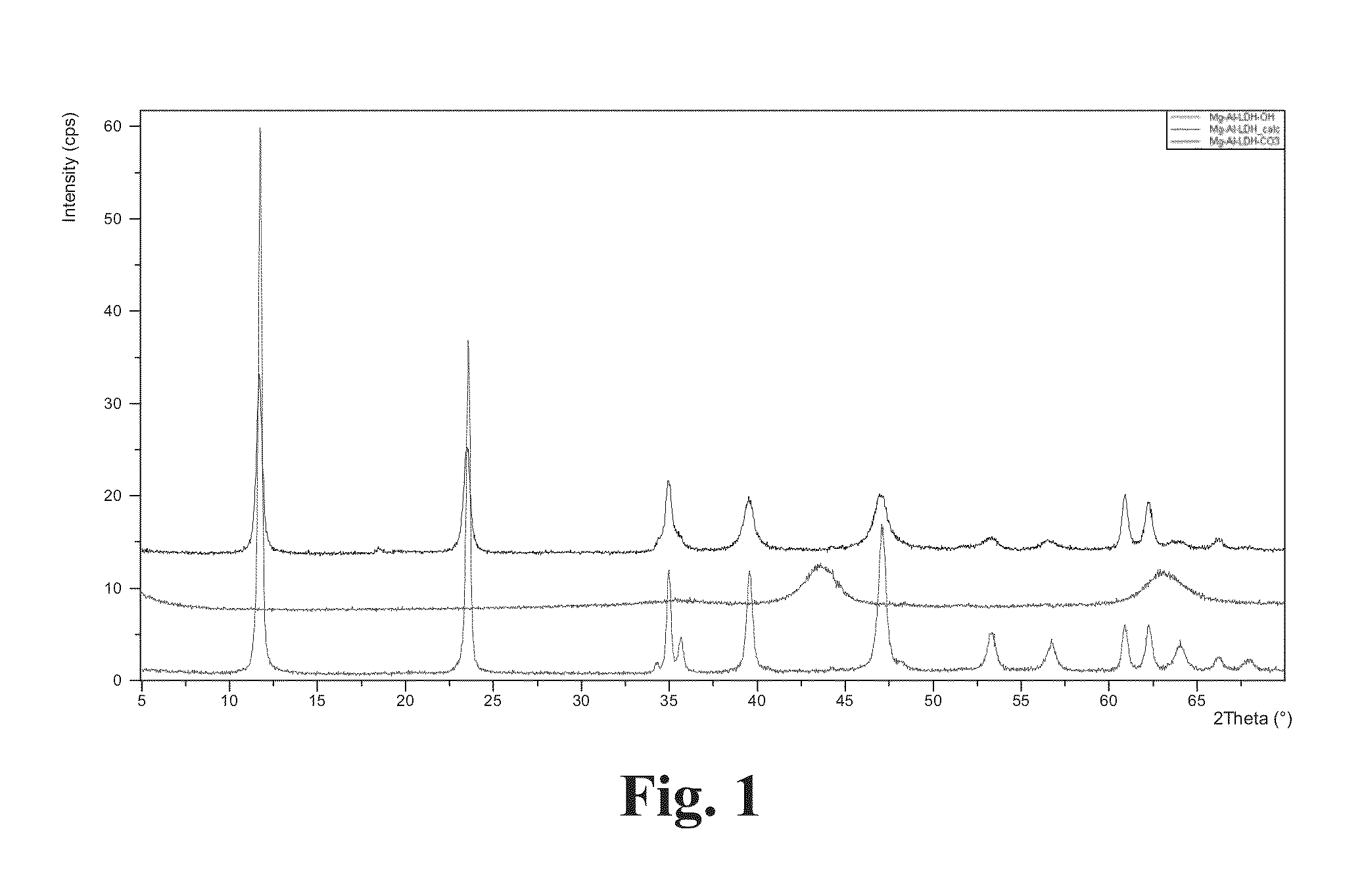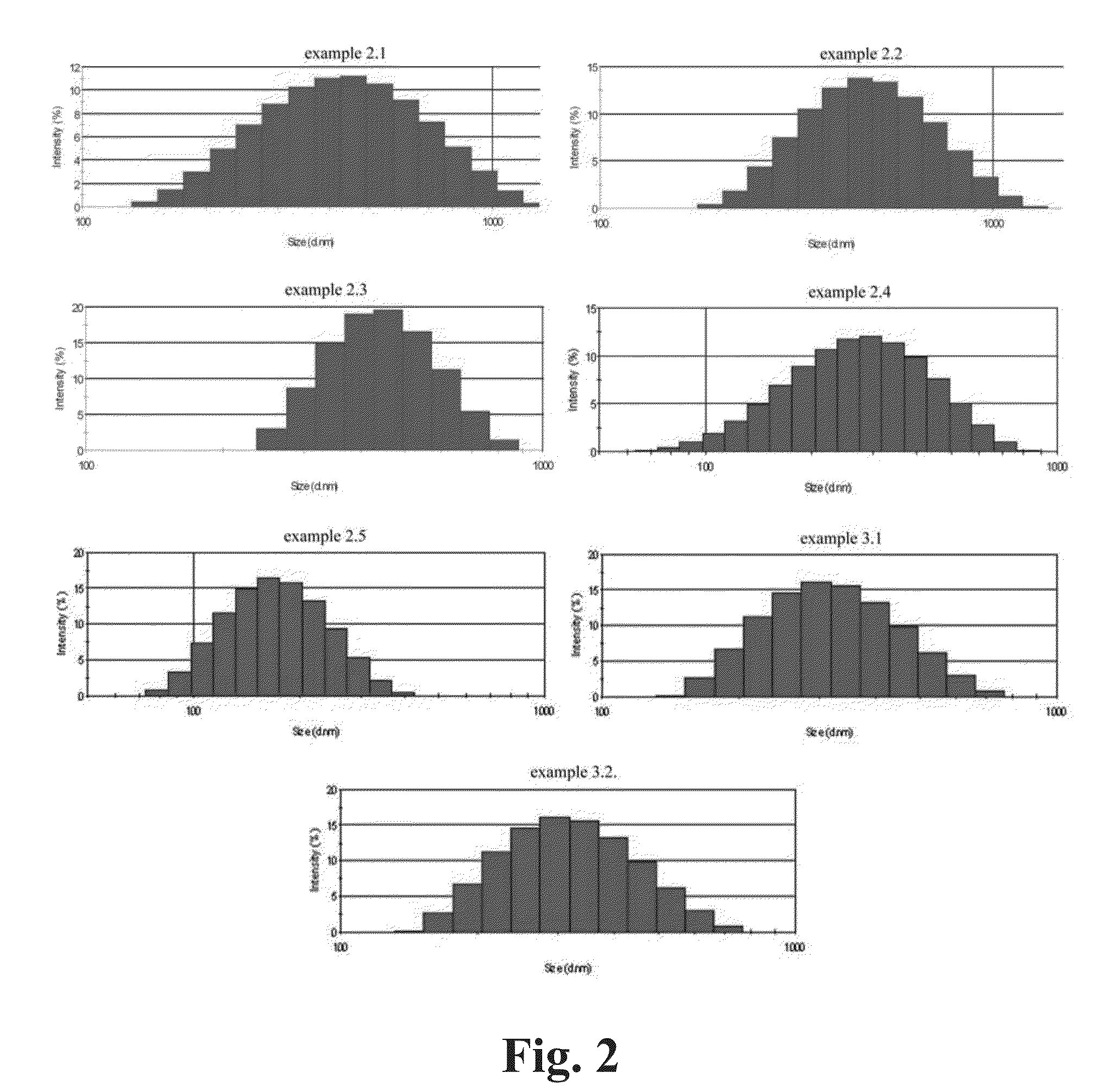Method of producing inorganic layered double hydroxides, novel inorganic layered double hydroxides and uses of the same
a technology of inorganic layered double hydroxide, which is applied in the direction of catalyst activation/preparation, natural mineral layered products, metal/metal-oxide/metal-hydroxide catalysts, etc., can solve the problems of destroying and coagulating the above suspension, affecting the environment, and not being suitable for use in water-containing media
- Summary
- Abstract
- Description
- Claims
- Application Information
AI Technical Summary
Benefits of technology
Problems solved by technology
Method used
Image
Examples
example 1
Reference System
[0107]An accurately weighed amount of approximately 0.2 g of cLDH was placed into 25 ml flask inside the dry-box. 10 ml of water were added and the content was sonicated for 5-15 min. Water bath was used during sonication to maintain room temperature of the sample. The resulting suspension was poured into a bigger flask and brought to the volume of 50 ml with water. The suspension was stirred at 300-500 rpm overnight and left to sediment for 1 h. The suspension sediments almost completely, leaving trace amounts of the LDH in an aqueous phase. The results are shown on the FIG. 1.
example 2
[0108]An accurately weighed amount of approximately 0.2 g of cLDH was placed into 25 ml flask inside the dry-box. 15 ml of the dispersion medium I were added and the content was sonicated for 5-15 min. Water bath was used during sonication to maintain room temperature of the sample. The resulting suspension was poured into a bigger flask and brought to the volume of 50 ml with water. The suspension was stirred at 300-500 rpm overnight and traces of non-dispersed particles were allowed to sediment for 24 h. Compositions of the dispersion medium I and results are shown in the Table 1 and FIG. 2.
example 3
[0109]The exfoliation may also be realised as described above in Example 2, by modification of the dispersion media (I or II). In the former case it is realised by addition of non-complexing non-toxic (biocompatible if required) non-ionic surfactant to the dispersion medium I (see Example 3.1). The latter is realised via addition of selected anions to the dispersion medium II (see Example 32). Compositions of the dispersion media and results are shown in the Table 1 and FIG. 2.
TABLEDispersion media composition and mean exfoliated LDH particle sizeDispersionDispersion medium Imedium IIMean particleExample(sonication)(stirring)size, nm1H2OH2On / a (sediments)2.1PEG200-Glycerol (1:1)H2O1862.2GlycerolH2O1952.3DiacetinH2O2402.4PEG400H2O1302.5PEG200H2O 603.1PEG200 + Sucrose stearateH2O1133.2PEG200H2O + HLLA 98
PUM
| Property | Measurement | Unit |
|---|---|---|
| temperature | aaaaa | aaaaa |
| size | aaaaa | aaaaa |
| viscosity | aaaaa | aaaaa |
Abstract
Description
Claims
Application Information
 Login to View More
Login to View More - R&D
- Intellectual Property
- Life Sciences
- Materials
- Tech Scout
- Unparalleled Data Quality
- Higher Quality Content
- 60% Fewer Hallucinations
Browse by: Latest US Patents, China's latest patents, Technical Efficacy Thesaurus, Application Domain, Technology Topic, Popular Technical Reports.
© 2025 PatSnap. All rights reserved.Legal|Privacy policy|Modern Slavery Act Transparency Statement|Sitemap|About US| Contact US: help@patsnap.com


